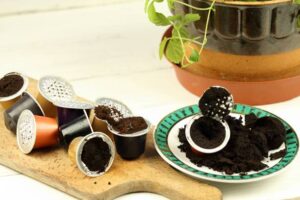For many of us, coffee is more than just a drink—it’s a ritual, a comfort, and a small daily indulgence. But making that perfect cup at home can be elusive, especially if you’re relying on a traditional coffee pot. Don’t worry; with a few simple techniques, you can master the art of brewing delicious coffee right in your kitchen.
Why Coffee Quality Starts with the Beans
Your coffee’s quality begins long before it hits the coffee pot. The type of beans you choose dramatically affects the final taste.
Select Fresh, High-Quality Beans
To start, always opt for fresh, high-quality beans. Look for a roast date rather than an expiration date and aim to use the beans within two weeks of roasting. Fresh beans ensure a more vibrant and flavorful cup.
Store Your Beans Properly
Proper storage is essential to maintain the freshness of your beans. Use an airtight container and keep it in a cool, dark place. Avoid the refrigerator or freezer as they can introduce moisture, which is the enemy of fresh coffee beans.
Choose the Right Grind
The grind size of your coffee beans can make or break your brew. For a coffee pot, a medium grind is generally ideal. It allows for optimal extraction, ensuring you get the full range of flavors from your beans.
The Importance of Water Quality
Believe it or not, water quality can significantly impact your coffee’s taste. Using the right type of water is crucial.
Use Filtered Water
Tap water often contains chlorine and other chemicals that can alter the taste of your coffee. Using filtered water helps remove these impurities, resulting in a cleaner and purer flavor.
Measure Your Water
Accuracy in measuring water is essential for consistency. Use a standard measuring cup to ensure you use the same amount of water each time you brew.
Heat to the Right Temperature
The temperature of the water also plays a significant role. Aim for 195-205°F (90-96°C) for optimal extraction. If your coffee pot doesn’t have a built-in thermometer, consider boiling water and letting it sit for 30 seconds before using it.
Mastering the Coffee-Water Ratio
Getting the coffee-to-water ratio right is crucial for a balanced cup. Too much coffee can make it bitter, while too little can make it weak.
Standard Ratio
A standard coffee-to-water ratio is 1 to 2 tablespoons of ground coffee per 6 ounces of water. Start with this ratio and adjust based on your taste preferences.
Adjusting for Taste
Feel free to tweak the ratio to suit your taste buds. If your coffee is too strong, use less coffee next time. Conversely, if it’s too weak, add more.
Consistency is Key
Once you find your perfect ratio, stick with it. Consistency ensures you get the same great-tasting coffee every time you brew.
Prepping Your Coffee Pot
Preparation is key to making good coffee. Ensure your coffee pot is clean and ready to go.
Clean Your Coffee Pot Regularly
Residue from old coffee can affect the taste of your new brew. Clean your coffee pot after each use to maintain the purity of your coffee.
Use Fresh Filters
Always use a fresh coffee filter for each brew. Old filters can impart stale flavors to your coffee.
Pre-Wet the Filter
Pre-wetting the coffee filter helps remove any paper taste and allows for better coffee extraction. Simply pour hot water over the filter before adding your coffee grounds.
Brewing Your Coffee
The moment of truth! Follow these steps to brew the perfect pot of coffee.
Add Coffee Grounds
Add the measured coffee grounds to the pre-wet filter. Ensure the grounds are evenly distributed for uniform extraction.
Pour the Water
Pour the measured, heated water over the coffee grounds. Pour slowly and evenly to ensure all the coffee grounds are saturated.
Start Brewing
Turn on your coffee pot and allow it to brew. The brewing process should take about 4-5 minutes for optimal extraction.
Enhancing Your Coffee Experience
Once you’ve brewed your coffee, there are several ways to enhance your coffee experience.
Use Fresh Milk or Cream
If you like your coffee with milk or cream, use fresh dairy for the best taste. Fresh milk complements the coffee’s flavors without overpowering them.
Sweeten Wisely
Use natural sweeteners like honey or agave syrup for a healthier alternative to processed sugar. These sweeteners add a unique flavor dimension to your coffee.
Experiment with Flavors
Don’t be afraid to experiment with different flavors. Add a dash of cinnamon or nutmeg for a warm, spicy note, or try a splash of vanilla extract for a sweet twist.
Troubleshooting Common Issues
Even with the best techniques, sometimes things go wrong. Here are some common coffee brewing issues and how to fix them.
Bitter Coffee
If your coffee tastes bitter, it could be due to over-extraction or using too much coffee. Try using a coarser grind or reducing the amount of coffee.
Weak Coffee
Weak coffee is usually a result of under-extraction or using too little coffee. Use a finer grind or increase the amount of coffee for a stronger brew.
Coffee with an Off-Taste
An off-taste can result from dirty equipment or using poor-quality water. Ensure your coffee pot is clean and use filtered water for a better-tasting brew.
Creating a Coffee Routine
Making good coffee isn’t just about following steps—it’s about creating a routine that works for you.
Set Up a Coffee Station
Create a designated coffee station in your kitchen. Keep all your coffee-making essentials in one place for a streamlined process.
Time Your Brew
Consistency is key to a great cup of coffee. Find a time that works for you and stick to it, making coffee a pleasant part of your daily routine.
Enjoy the Process
Take time to enjoy the coffee-making process. Savor the aroma of freshly ground beans and the sound of brewing coffee—it’s all part of the experience.
Witches Brew Cauldron Stoneware Mug

- 100% Bone China
- Tillverkad av hög kvalitet material, This mug is designed to look like a cauldron and features the words ´Witches Brew´
- The mug will come in a ing cardboard box
Exploring Different Coffee Beans
The world of coffee beans is vast and varied. Exploring different types of beans can enhance your coffee experience.
Single-Origin Beans
Single-origin beans come from a specific region and offer unique flavor profiles. Try beans from Ethiopia for fruity notes or Colombia for a balanced flavor.
Blends
Blends combine beans from different regions to create a balanced flavor. They’re great for those who appreciate a well-rounded cup of coffee.
Seasonal Beans
Some beans are only available during certain seasons. Keep an eye out for these special offerings to try something new and exciting.
The Art of Tasting Coffee
Tasting coffee is an art that goes beyond simply drinking it.
Smell the Coffee
Before taking a sip, take a moment to smell the coffee. Inhale deeply to appreciate the different aromas.
Taste in Sips
Taste the coffee in small sips, letting it linger on your palate. Note the different flavors and how they evolve as the coffee cools.
Take Notes
Keep a coffee journal to record your observations. Note the flavors you like and dislike, and use this information to refine your future coffee choices.
Conclusion
Brewing the perfect cup of coffee in a coffee pot is an art that requires quality ingredients, precise techniques, and a bit of practice. By following the steps outlined in this guide, you can transform your morning routine into a delightful coffee experience. From selecting the right beans to mastering the coffee-to-water ratio, every step plays a crucial role in achieving that perfect brew.
But don’t stop here! Experiment with different beans, flavors, and brewing techniques to find what works best for you. And if you have any questions or need further assistance, feel free to reach out. Happy brewing!
Frequently Asked Questions
What is the best coffee-to-water ratio for a coffee pot?
A standard ratio is 1 to 2 tablespoons of ground coffee per 6 ounces of water. Adjust based on your taste preferences.
How often should I clean my coffee pot?
Clean your coffee pot after each use to maintain the purity of your coffee. Regular cleaning prevents residue buildup that can affect the taste.
Can I use tap water for brewing coffee?
It’s best to use filtered water to remove impurities that can alter the taste of your coffee. Tap water often contains chlorine and other chemicals that can negatively impact the flavor.
What grind size should I use for a coffee pot?
A medium grind is ideal for a coffee pot. It allows for optimal extraction, ensuring you get the full range of flavors from your beans.
How can I make my coffee less bitter?
To reduce bitterness, try using a coarser grind or reducing the amount of coffee. Over-extraction or using too much coffee can result in a bitter taste.
By understanding these aspects and incorporating them into your coffee-making routine, you can enjoy a consistently great cup of coffee every day.






